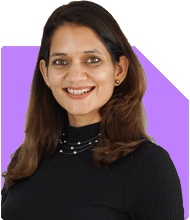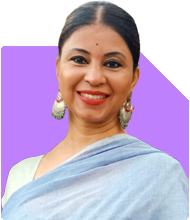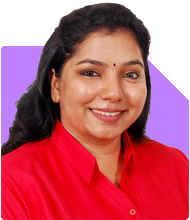नमस्कार, मेरी आयु 40 मिलियन है। मैं आपसे अनुरोध करता हूँ कि आप मुझे यह समझने में मदद करें कि सेवानिवृत्ति के लिए कितना धन चाहिए, क्योंकि मैं अगले 3-5 वर्षों में सेवानिवृत्त होना चाहता हूँ। वर्तमान में मेरी मासिक आय 2.3 लाख है और मेरी पत्नी भी नौकरी करती है, लेकिन अगले 2-3 महीनों में नौकरी छोड़ देगी। हमारी 10 साल की एक बेटी है, वर्तमान में मैं किराए के मकान में रहता हूँ और मेरा कुल मासिक खर्च 1.1 लाख है। जब मैं सेवानिवृत्त हो जाऊँगा, तो हम अपने पैतृक फ्लैट में शिफ्ट हो जाएँगे, जहाँ मुझे उम्मीद है कि कोई किराया नहीं होगा। वर्तमान निवेश 1. 2029 में परिपक्व होने वाले आरईसी बॉन्ड में 50 लाख, 2. स्टॉक में 42 लाख, 3. म्यूचुअल फंड में 17 लाख, 4. 16 लाख एफडी, 5. पीपीएफ में 15 लाख, 6. मैं 1.3 लाख मासिक एसआईपी करता हूँ। मेरी पत्नी का निवेश 1. 30 लाख कृपया बताएं कि सेवानिवृत्त होने के लिए कुल कितनी धनराशि की आवश्यकता होगी, यह मानते हुए कि मुझे अपनी बेटी की स्नातकोत्तर शिक्षा और विवाह के लिए 75 लाख की आवश्यकता है और सेवानिवृत्त होने के बाद हमें अपने खर्चों के लिए हर महीने 75 हजार की आवश्यकता होगी।
Ans: आपने अपनी आय, लक्ष्य, वर्तमान संपत्ति और भविष्य की योजनाओं को बहुत स्पष्टता से समझाया है। आपकी शुरुआती योजनाएँ मज़बूत हैं। यह एक बहुत अच्छा आधार प्रदान करता है। आप अगले कुछ वर्षों में समझदारी भरे कदमों से एक शांतिपूर्ण सेवानिवृत्ति प्राप्त कर सकते हैं।
"आपकी वर्तमान स्थिति
आपकी आयु 40 वर्ष है। आप 3 से 5 वर्षों में सेवानिवृत्त होने की योजना बना रहे हैं। आप 2.3 लाख रुपये प्रति माह कमाते हैं। आपकी पत्नी भी नौकरी करती हैं, लेकिन जल्द ही काम करना बंद कर देंगी। आपकी एक बेटी है जिसकी उम्र 10 साल है। आपका वर्तमान मासिक खर्च लगभग 1.1 लाख रुपये है। सेवानिवृत्ति के बाद यह खर्च कम हो जाएगा क्योंकि आप अपने पैतृक फ्लैट में शिफ्ट हो जाएँगे।
आपका निवेश आधार पहले से ही अच्छा है। आपने बॉन्ड, स्टॉक, म्यूचुअल फंड, पीपीएफ, एफडी और एसआईपी में बचत की है। आपकी पत्नी के पास भी अपनी बचत है और फ्लैट से किराये की आय भी है। ये सभी एक अच्छी शुरुआत का आधार बनाते हैं।
यह शुरुआती आधार आपको मज़बूत योजना बनाने में मदद करता है। यह और भी बेहतर योजना बनाने की गुंजाइश भी देता है। आप सही रास्ते पर हैं।
" आपके पारिवारिक लक्ष्य
आपको अपनी बेटी की उच्च शिक्षा और शादी के लिए 75 लाख रुपये चाहिए।
आप सेवानिवृत्ति के बाद परिवार के खर्च के लिए हर महीने 75,000 रुपये चाहते हैं।
आप 3 से 5 साल में सेवानिवृत्त होना चाहते हैं।
आप सेवानिवृत्ति के बाद अपने पैतृक फ्लैट में शिफ्ट हो जाएँगे।
आपको अपनी पत्नी के फ्लैट से 10,000 रुपये किराये की आय होगी।
ये लक्ष्य स्पष्ट हैं। ये दिशा देते हैं। ये एक मज़बूत योजना बनाने में मदद करते हैं।
"आपके वर्तमान निवेश"
आपके निवेश में शामिल हैं:
2029 में परिपक्व होने वाले आरईसी बॉन्ड में 50 लाख रुपये।
शेयरों में 42 लाख रुपये।
म्यूचुअल फंड में 17 लाख रुपये।
सावधि जमा में 16 लाख रुपये।
पीपीएफ में 15 लाख रुपये।
मासिक एसआईपी के रूप में 1.3 लाख रुपये।
आपकी पत्नी के पास:
30 लाख रुपये का कोष।
40 लाख रुपये का एक फ्लैट, जिसका किराया हर महीने 10,000 रुपये है।
आपकी संयुक्त निवल संपत्ति अच्छी है। इससे आपको आने वाले वर्षों में अपनी सेवानिवृत्ति निधि बनाने की अच्छी क्षमता मिलती है।
"सेवानिवृत्ति के बाद अपनी व्यय आवश्यकताओं को समझना"
आप सेवानिवृत्ति के बाद प्रति माह 75,000 रुपये की उम्मीद करते हैं। इसमें सभी बुनियादी ज़रूरतें शामिल हैं। आपको किराया नहीं देना होगा। इससे लागत कम हो जाती है। यह अनुमान आज उचित लगता है।
मुद्रास्फीति के साथ आपकी लागत बढ़ेगी। इसलिए आपको बढ़ती ज़रूरतों के लिए योजना बनानी चाहिए। एक मजबूत सेवानिवृत्ति कोष को 40 से 45 वर्षों तक बढ़ती लागत का समर्थन करना चाहिए क्योंकि आप जल्दी सेवानिवृत्त हो रहे हैं।
जल्दी सेवानिवृत्ति के लिए एक बड़े बफर की आवश्यकता होती है। इसलिए आपको विकास के साथ-साथ सुरक्षा की भी आवश्यकता होती है। आपकी योजना में विकास संपत्तियाँ और सुरक्षा संपत्तियाँ शामिल होनी चाहिए।
"बाद में आपको कितनी मासिक आय की आवश्यकता होगी"
75,000 रुपये प्रति माह 9 लाख रुपये प्रति वर्ष के बराबर है। भविष्य के वर्षों में, यह लागत बढ़ सकती है। यदि हम स्थिर वृद्धि मानते हैं, तो आपकी भविष्य की लागत बहुत अधिक होगी।
इसलिए सेवानिवृत्ति कोष को इस तरह डिज़ाइन किया जाना चाहिए:
मासिक आय प्रदान करे।
मुद्रास्फीति को मात दे।
40 से 45 वर्षों तक आपका साथ दे।
बाजार में गिरावट के दौर में भी आपके परिवार की सुरक्षा करे।
यदि आपकी ज़रूरतें बदलती हैं, तो लचीलापन बनाए रखें।
एक मज़बूत सेवानिवृत्ति कोष को सुरक्षा और दीर्घकालिक विकास, दोनों का समर्थन करना चाहिए।
"आपको कितने कोष का लक्ष्य रखना चाहिए?"
एक सुरक्षित लक्ष्य एक बड़ा और लचीला कोष होता है जो बिना पैसे खत्म हुए लंबे समय तक चल सके। जल्दी सेवानिवृत्ति के लिए, सामान्य नियम एक बहुत बड़ी संख्या का सुझाव देता है। ऐसा इसलिए है क्योंकि आपको कई दशकों तक आय की आवश्यकता होती है।
आपको बढ़ती आय उत्पन्न करने के लिए पर्याप्त बड़ा कोष चाहिए। आपको अप्रत्याशित स्वास्थ्य लागतों, जीवनशैली के झटकों और मुद्रास्फीति में बदलाव के लिए भी सुरक्षा की आवश्यकता होती है।
आपका लक्षित सेवानिवृत्ति कोष एक मज़बूत दायरे में होना चाहिए। 75,000 रुपये प्रति माह की आपकी ज़रूरतों और बेटी की शिक्षा और शादी जैसे लक्ष्यों के लिए, आपको उच्च श्रेणी में एक संयुक्त सेवानिवृत्ति तैयारी कोष का लक्ष्य रखना चाहिए।
आपके परिवार के लिए एक सुरक्षित सीमा कई करोड़ रुपये से ज़्यादा की एक बहुत बड़ी राशि होगी। यह बड़ी सीमा आपको देती है:
आय सुरक्षा।
मुद्रास्फीति से सुरक्षा।
बाजार चक्रों के दौरान शांति।
लंबी उम्र में आराम।
बेटी के भविष्य के लिए जगह।
स्वास्थ्य के लिए मज़बूत सहारा।
आप अपनी मौजूदा संपत्तियों की बदौलत पहले से ही इस राह पर हैं। अगले 3 से 5 सालों में व्यवस्थित निर्माण के साथ आप इस सीमा के करीब पहुँच जाएँगे।
"आपको इस बड़े कोष की आवश्यकता क्यों है?"
आप जल्दी सेवानिवृत्त होंगे। इसका मतलब है कि आपके कोष से आपको ज़्यादा साल जीने का मौका मिलेगा। आपके कोष में जल्दी गिरावट नहीं आनी चाहिए। सेवानिवृत्ति के बाद भी इसे बढ़ना चाहिए। इससे मासिक आय और परिवार को दीर्घकालिक सुरक्षा मिलनी चाहिए।
यह तभी संभव है जब कोष मज़बूत और सुव्यवस्थित हो। कमज़ोर कोष तनाव पैदा करता है। मज़बूत कोष आज़ादी देता है।
साथ ही, आपकी बेटी के भविष्य के खर्च को अलग रखना चाहिए। इसे एक अलग फंड में रखना चाहिए। यह आपके रिटायरमेंट फंड को प्रभावित नहीं करना चाहिए।
एक मज़बूत कोष इन दोनों दुनियाओं को अलग और सुरक्षित बनाता है।
"आपकी मौजूदा संपत्तियाँ और उनकी मज़बूती"
आपके पास पहले से ही अच्छा विविधीकरण है:
बॉन्ड सुरक्षा प्रदान करते हैं।
शेयर विकास प्रदान करते हैं।
म्यूचुअल फंड प्रबंधित विकास प्रदान करते हैं।
एफडी स्थिरता प्रदान करता है।
पीपीएफ कर-मुक्त दीर्घकालिक बचत प्रदान करता है।
यह मिश्रण पहले से ही एक अच्छी शुरुआत है। लेकिन आपको जल्दी सेवानिवृत्ति के लिए इस मिश्रण को और अधिक संरचित बनाने की आवश्यकता है।
आपका 1.3 लाख रुपये का मासिक एसआईपी भी मज़बूत है। यह आपके भविष्य को तेज़ी से आकार देता है। आपको इसे जारी रखना चाहिए।
आपकी पत्नी की किराये की आय कम लेकिन स्थिर है। इससे आपको मज़बूती मिलती है।
यदि आप अभी अपने आवंटन को परिष्कृत करते हैं, तो आपका संयुक्त वित्तीय आधार आपके सेवानिवृत्ति लक्ष्य तक पहुँच सकता है।
"आपकी बेटी के भविष्य के लिए धन की आवश्यकता"
आपको अपनी बेटी की शिक्षा और विवाह के लिए 75 लाख रुपये की आवश्यकता है। आपको इस लक्ष्य को अपने सेवानिवृत्ति लक्ष्य से अलग रखना चाहिए।
आपके वर्तमान एसआईपी और भविष्य के आवंटन से इस लक्ष्य के लिए एक समर्पित फंड तैयार होना चाहिए। सक्रिय रूप से प्रबंधित होने पर एक दीर्घकालिक फंड अच्छी तरह से बढ़ सकता है।
इस फंड को अपनी सेवानिवृत्ति की ज़रूरतों के साथ न मिलाएँ। मिलावट करने से बुढ़ापे में धन की कमी हो सकती है। इस कोष को हमेशा सुरक्षित रखें।
"आपके सेवानिवृत्ति पथ के लिए एक मज़बूत परिसंपत्ति मिश्रण"
एक संतुलित मिश्रण ज़रूरी है। मुद्रास्फीति को मात देने के लिए आपको विकासात्मक परिसंपत्तियों की आवश्यकता है। आय के लिए आपको स्थिर परिसंपत्तियों की भी आवश्यकता है।
आपको इंडेक्स फंड से बचना चाहिए क्योंकि वे लचीलापन नहीं देते हैं। इंडेक्स फंड एक निश्चित इंडेक्स का पालन करते हैं। वे विभिन्न बाजारों में सक्रिय बदलाव नहीं कर सकते। बाजार में बदलाव होने पर वे बेहतर शेयरों में नहीं जा सकते। वे आपको लंबे समय तक कमज़ोर क्षेत्रों में बने रहने के लिए मजबूर करते हैं। वे मंदी के चक्र में भी आपकी मदद नहीं करते क्योंकि वे सुरक्षित विकल्पों में बदलाव करके आपकी रक्षा नहीं कर सकते। इससे सेवानिवृत्ति योजना को नुकसान हो सकता है।
सक्रिय रूप से प्रबंधित फंड बेहतर होते हैं क्योंकि:
वे सक्रिय परिसंपत्ति चयन प्रदान करते हैं।
वे बेहतर रिटर्न की गुंजाइश देते हैं।
वे क्षेत्र बदलने की लचीलापन प्रदान करते हैं।
वे डाउनसाइड प्रबंधन प्रदान करते हैं।
वे एक कुशल फंड मैनेजर तक पहुँच प्रदान करते हैं।
ये दीर्घकालिक योजनाएँ ज़्यादा सुरक्षित रूप से बनाने में मदद करती हैं।
डायरेक्ट प्लान में भी जोखिम होता है। डायरेक्ट प्लान मार्गदर्शन नहीं देते। ये व्यवहारिक सहायता नहीं देते। ये बाज़ार के समय निर्धारण में मदद नहीं करते। ये पोर्टफोलियो को आकार देने में मदद नहीं करते। ये सारा फ़ैसला आप पर छोड़ देते हैं। एक गलती सालों की दौलत गँवा सकती है।
एक प्रमाणित वित्तीय योजनाकार के मार्गदर्शन वाली नियमित योजनाएँ आपको फ़ैसले लेने में मदद करती हैं। ये आपको अनुशासित रहने में मदद करती हैं। ये आपको घबराहट से बचने में मदद करती हैं। ये आपको सही समय पर आवंटन में बदलाव करने में मदद करती हैं। इससे लंबी अवधि में दौलत बचती है।
"अगले 3-5 सालों में आपकी निवेश यात्रा कैसे बढ़नी चाहिए"
अपना SIP जारी रखें।
जब आपकी आय बढ़े तो SIP बढ़ाएँ।
संकेंद्रण जोखिम को कम करने के लिए अपनी कुछ शेयर होल्डिंग्स को नियोजित दीर्घकालिक म्यूचुअल फंड में स्थानांतरित करें।
एक निश्चित बेटी की शिक्षा निधि बनाएँ।
अपने REC बॉन्ड की परिपक्वता राशि का एक हिस्सा लंबी अवधि के लिए रखें।
लंबी अवधि के लिए बहुत ज़्यादा राशि सावधि जमा में रखने से बचें।
एक साल के खर्च के लिए एक सुरक्षा निधि बनाएँ।
इससे एक संपूर्ण संरचना तैयार होगी।
"आपकी किराये की आय की भूमिका"
आपकी 10,000 रुपये प्रति माह की किराये की आय छोटी लेकिन स्थिर है। समय के साथ यह बढ़ेगी। यह आय सेवानिवृत्ति के बाद आपके मासिक नकदी प्रवाह का समर्थन करेगी।
आप इसका उपयोग उपयोगिताओं या स्वास्थ्य बीमा प्रीमियम के लिए कर सकते हैं। यह एक सुरक्षा कवच प्रदान करता है।
"आपका आपातकालीन बफर"
आपको कम से कम एक वर्ष के आवश्यक खर्चों को सुरक्षित स्थान पर रखना चाहिए। यह एक तरल खाते या अल्पकालिक निधि में हो सकता है। यह आपको झटकों से बचाता है।
चूँकि आप जल्दी सेवानिवृत्ति की योजना बना रहे हैं, इसलिए एक मजबूत बफर महत्वपूर्ण है। यह कम खर्च वाले महीनों में भी शांति प्रदान करता है।
"एक संरचित सेवानिवृत्ति दृष्टिकोण"
आपके लिए एक पूर्ण सेवानिवृत्ति योजना में निम्नलिखित शामिल होने चाहिए:
सेवानिवृत्ति के बाद एक स्पष्ट मासिक आय योजना।
एक ऐसा कोष जो बढ़ सके और सुरक्षा प्रदान कर सके।
एक बढ़ती आय प्रणाली जो मुद्रास्फीति के अनुरूप हो।
एक अलग बेटी के भविष्य का कोष।
आपके परिवार के लिए एक स्वास्थ्य कवर योजना।
एक कर-कुशल निकासी योजना।
मुश्किल समय में आपकी सुरक्षा के लिए एक बाज़ार चक्र योजना।
यह समग्र दृष्टिकोण आपके परिवार को दशकों तक मज़बूत बनाए रखता है।
"सेवानिवृत्ति वर्ष तक आपको क्या बनाना चाहिए"
आपका लक्ष्य सेवानिवृत्ति से पहले निवेश में करोड़ों रुपये की मज़बूत सीमा तक पहुँचना होना चाहिए। आपके पास पहले से ही एक बड़ी राशि है। आप अगले 3 से 5 वर्षों में SIP, स्टॉक ग्रोथ, बॉन्ड मैच्योरिटी और अनुशासित बचत के ज़रिए और भी निवेश करेंगे।
एक बार जब आप अपनी लक्ष्य सीमा तक पहुँच जाते हैं, तो आप बदलाव की प्रक्रिया शुरू कर सकते हैं:
एक हिस्सा स्थिर संपत्तियों में लगाएँ।
एक हिस्सा दीर्घकालिक विकास वाली संपत्तियों में रखें।
एक मासिक आय रणनीति बनाएँ।
एक आरक्षित राशि रखें।
एक बच्चे के भविष्य के लिए एक राशि रखें।
एक दीर्घकालिक विकास वाली राशि रखें।
यह संरचना आपको सभी बाज़ार स्थितियों में सुरक्षा प्रदान करती है।
"अंतिम अंतर्दृष्टि"
आपकी वित्तीय यात्रा पहले से ही मज़बूत है। आपकी आय अच्छी है। आपने अच्छी बचत की है। आपके पास कई प्रकार की संपत्तियाँ हैं। आपके पास एक स्पष्ट समय-सीमा है। और आपके लक्ष्य स्पष्ट हैं। यह आधार मज़बूत है।
अगले 3 से 5 वर्षों में, आपका ध्यान अपनी संयुक्त निधि को करोड़ों रुपये तक बढ़ाने, अपनी बेटी के लिए एक अलग फंड रखने, अनियोजित संपत्तियों में जोखिम कम करने और एक स्थिर दीर्घकालिक संरचना बनाने पर होना चाहिए।
वर्तमान मार्ग और एक अनुशासित संरचना के साथ, आप शांतिपूर्वक सेवानिवृत्त हो सकते हैं और कई दशकों तक आत्मविश्वास के साथ अपने परिवार का भरण-पोषण कर सकते हैं।
सादर,
के. रामलिंगम, एमबीए, सीएफपी,
मुख्य वित्तीय योजनाकार,
www.holisticinvestment.in
https://www.youtube.com/@HolisticInvestment




























